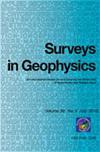Accurate diagnosis of regional atmospheric and surface energy budgets is critical for understanding the spatial distribution of heat uptake associated with the Earth’s energy imbalance (EEI). This contribution discusses frameworks and methods for consistent evaluation of key quantities of those budgets using observationally constrained data sets. It thereby touches upon assumptions made in data products which have implications for these evaluations. We evaluate 2001–2020 average regional total (TE) and dry static energy (DSE) budgets using satellite-based and reanalysis data. For the first time, a consistent framework is applied to the ensemble of the 5th generation European Reanalysis (ERA5), version 2 of modern-era retrospective analysis for research and applications (MERRA-2), and the Japanese 55-year Reanalysis (JRA55). Uncertainties of the computed budgets are assessed through inter-product spread and evaluation of physical constraints. Furthermore, we use the TE budget to infer fields of net surface energy flux. Results indicate biases < 1 W/m2 on the global, < 5 W/m2 on the continental, and ~ 15 W/m2 on the regional scale. Inferred net surface energy fluxes exhibit reduced large-scale biases compared to surface flux data based on remote sensing and models. We use the DSE budget to infer atmospheric diabatic heating from condensational processes. Comparison to observation-based precipitation data indicates larger uncertainties (10–15 Wm−2 globally) in the DSE budget compared to the TE budget, which is reflected by increased spread in reanalysis-based fields. Continued validation efforts of atmospheric energy budgets are needed to document progress in new and upcoming observational products, and to understand their limitations when performing EEI research.



